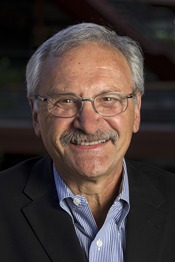Program Information
Academic-Industrial Research and Development Partnerships - Nuts and Bolts, Pitfalls and Rewards
K Brown1*, T Mackie2*, N Pelc3*, J Wong4*, (1) Elekta Oncology Systems LTD, Crawley, (2) University of Wisconsin, Madison, WI, (3) Stanford University, Stanford, CA, (4) Johns Hopkins University, Baltimore, MD
Presentations
MO-FG-213-0 (Monday, July 13, 2015) 4:30 PM - 6:00 PM Room: 213
Academic-industrial collaborations are playing an increasingly prominent role in medical physics research. Successful partnerships have enabled truly translational, benchtop-to-bedside research that has significantly and positively impacted our field. Given the current flat or depleting trends in federal funding, and the increasing emphasis in the medical physics community on demonstrating translatability, efficacy, and safety prior to widespread clinical use, it is anticipated that such partnerships will become ever more important in advancing our field. In the future, it is likely that neither academia alone, nor industry alone, will be able to bring significant innovation to successfully impact patient care in radiotherapy. Such innovation will require partnership and symbiosis through the lifetime of the project.
This symposium is aimed at professionals from academia and the industry who are interested in either initiating new collaborations or maintaining and improving existing partnerships. We will hear from four thought leaders from industry and academia on critical aspects of building and maintaining successful academic-industrial research partnerships. The following topics will be addressed:
1. Motivations: The industry perspective [Kevin Brown, Elekta]
What goes into the development of a company's R&D roadmap
What are the motivations and expectations of the industry from academic partners
How can academics make a successful pitch by identifying projects aligned with a company's roadmap
Why are some relationships successful and some not
Milestones and progress reports - Why do we need them
2. Motivations: The academic perspective [T. Rock Mackie, Univ. of Madison, WI; Tomotherapy]
What are the motivations and expectations of academic partners from the industry
What are the cultural differences in academia vs industry on sharing information, exchanging ideas
Partnership or entrepreneurship? When does each option make sense
3. Industrial Grants and Research Contracts – a Primer [Norbert Pelc; Stanford University]
What topics are suited to industrial grants vs. academic grants
How do resources (personnel effort, tuition) get allocated and charged in academia
What are reasonable resource and timeline requests for small and big projects; from small and big companies
"Fair market value" considerations
Sections of a research agreement (IP including software confidential information, publications, data, exclusivity, support)
4. Managing the relationship [John Wong, Johns Hopkins University]
How to effectively collaborate with each other
How to adapt to changes in the relationship
How to renew funding with the industry
Moderated Panel Discussion [All speakers + moderators]
Learning Objectives:
1. Understand the motivations of each partner
2. Elements that contribute to a successful partnership
3. Avoiding pitfalls - Challenges on either side that may derail a project
4. How to frame a research grant and agreement
5. How to sustain the collaborative relationship
Funding Support, Disclosures, and Conflict of Interest: Amit Sawant: Funding from: NIH. Varian, Elekta and VisionRT; Michelle Svatos: Employee and shareholder: Varian, Board Member, TopasMC; Kevin Brown: Employee, Elekta; T. Rock Mackie: Consultant, Accuray; Norbert Pelc: Research support: Philips Healthcare, GE Healthcare; John Wong: Funding from NIH, Xstrahl and Elekta. Co-founder and advisor for JPLC Associates, LLC.
Contact Email:








